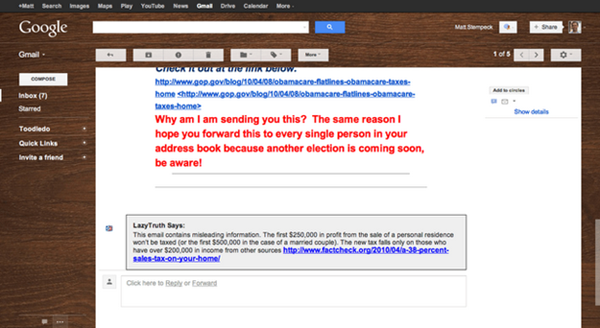Ever received email forwards that make outrageous claims or carry old urban legends that have been debunked a million times in the past? No? Then you must not have gullible friends or crazy relatives abroad who love to believe and forward everything they read in emails. For the rest, it’s a constant attack on our intelligence and factual sanctity, and we hate this from our guts.
You have two options to deal with such chain letters – delete it or, well… forward it again. Or if you are willing to go the extra mile, you can do your own research on websites such as Factcheck.org and Snopes.com – an excellent online repository of urban legends – and carefully type out a reply, with cross-references, debunking whatever rumour was in the email. I did this a few times in the past, but then stopped wasting my time after they failed to have the intended effect on the recipients. Now, there is a new tool to tackle this problem.

Matt Stempeck and his team at MIT's Media Lab has developed LazyTruth, a plug-in for Chrome that automatically scans email for information that FactCheck.org and Politifact have deemed false. When you open a forwarded email, an “Ask LazyTruth” button appears at the bottom inviting you to investigate. The software checks the email against data pulled from several fact checking websites, and if something doesn't check out, it'll provide a few words of correction and a link to where you can find out more. You can then easily pass that verified information back to the email's sender. The sender will either stop speaking to you for being a snob, which is well and good, or continue sending more email forwards unfazed. But at least, you tried.
For now, LazyTruth can only match exact strings against Stempeck’s huge and growing database of chain letters and their variations. Down the road Stempeck plans to add more kinds of filters to LazyTruth to catch rumours like urban myths, hoaxes, false security threats, etc., but for now the tool is limited to political tall tales.
via The Atlantic

Comments
Post a Comment